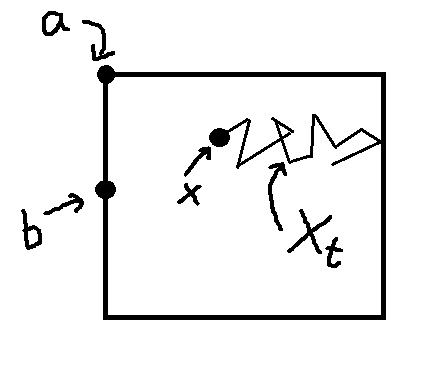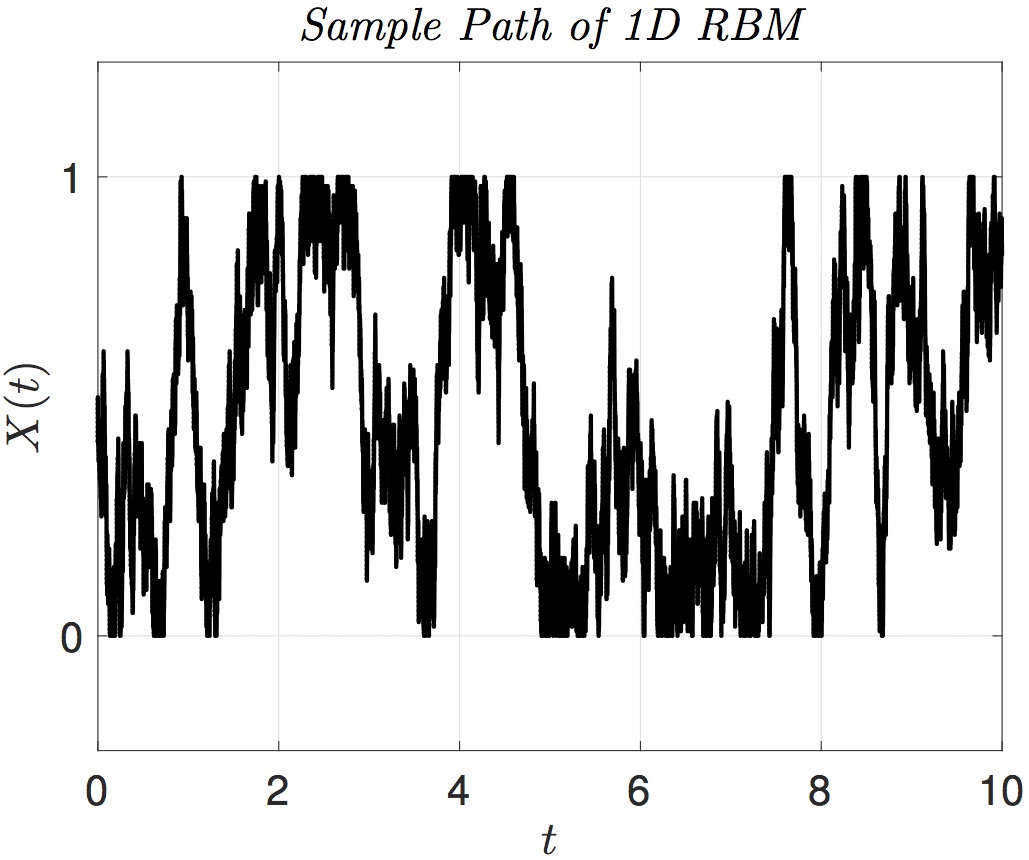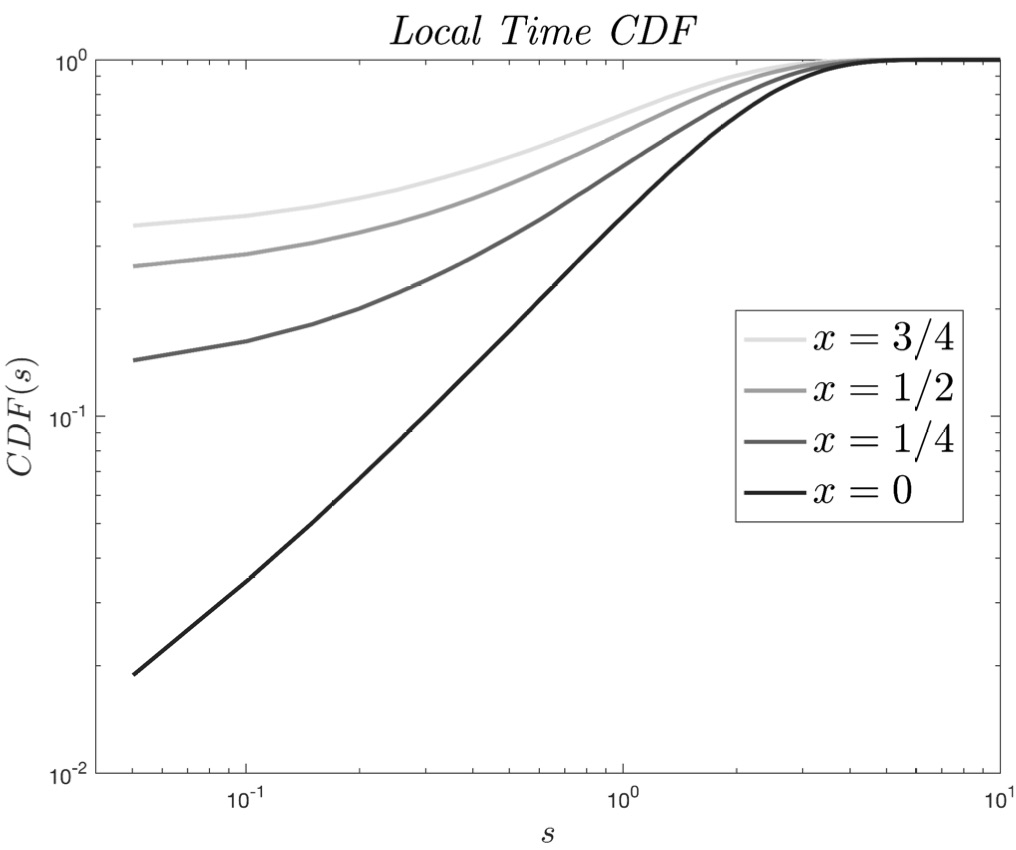I have a question about a reflecting Brownian motion and its boundary local time.
Bass and Hsu studied the existence of Reflecting Brownian motion and boundary local time on a bounded Lipschitz domain in 1991. Although I don't state the definition of boundary local time here, I will briefly explain what it is. Roughly speaking, boundary local time $\{L_{t}\}$ is an additive functional on a probability space and satisfies the following the equation: \begin{align*} L_{t}=\int_{0}^{t}1_{\left\{X_{s} \in \partial D \right\}}\,dL_{s}, \end{align*} where $\{X_{t}\}$ is a Reflecting Brownian motion on $\bar{D}$ (closure of a bounded Lipschitz domain $D$). That is, $L_t$ increases only when $X_t \in \partial D$.
Question
Let $D$ be a rectangle like as the follwong picture. Even in this case, we can define reflecting Brownian motion $(X_t,P_x)$ starting from $x \in \bar{D}$ and boundary local time $\{L_{t}\}$.
I am interested in the quantity $ P_{x}(L_t>M), $ where $M$ is a positive constant.
I think $P_{a}(L_t >M) \ge P_{b}(L_t >M)$, where $a,b$ are boundary points in the following picture. But I don't know how to prove this inequality. If you know related studies, please let me know.
ADD
In this question, $\{X_{t}\}$ is the Markov process generated by the following Dirichlet form on $L^{2}(\bar{D})$: \begin{align*} \mathcal{E}(f,g)=\frac{1}{2}\int_{D}(\nabla f, \nabla g)\,dx,\quad f,g \in H^1(D), \end{align*} where $H^{1}(D)$ is the Sobolev space on $D$ with Neumann boundary condition. $\{L_{t}\}$ is the positive continuous additive functional associated with the surface measure on $\partial D$. To be more precise, $\{L_t\}$ and $\sigma$ are in the Revuz correspondence. Futheremore, $X_{t}$ has the following Skorohod representation: \begin{align*} X_t=X_0+B_t+\frac{1}{2}\int_{0}^{t}n(X_s)\,dL_s, \end{align*} where $\{B_t\}$ is the $d$-dimensional Brownian motion and $n$ is the unit inward normal vector to $\partial D$.




